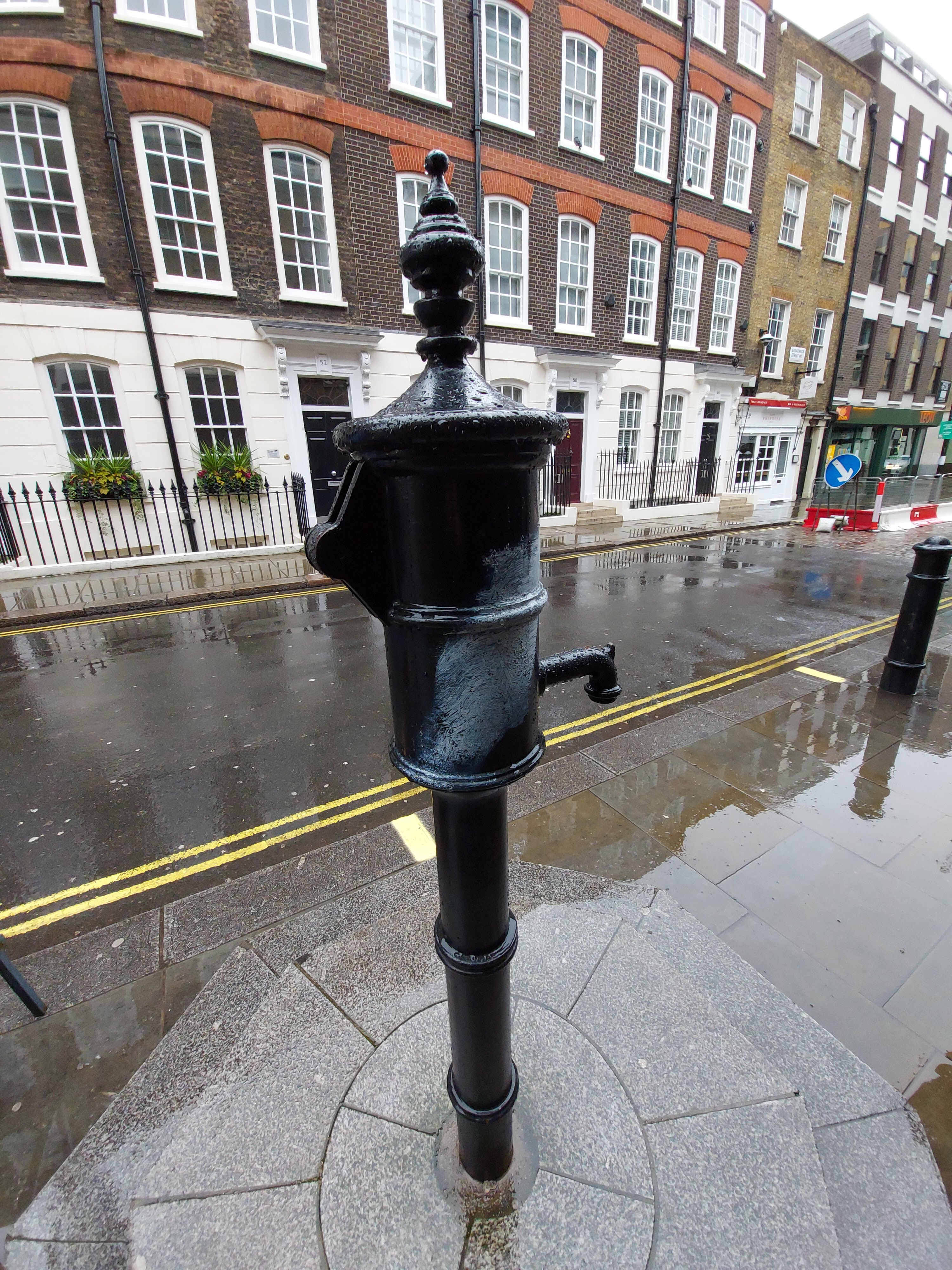Various Maps of London & the British Isles
Step 0 of 0
1

2

3

4

5

6

7
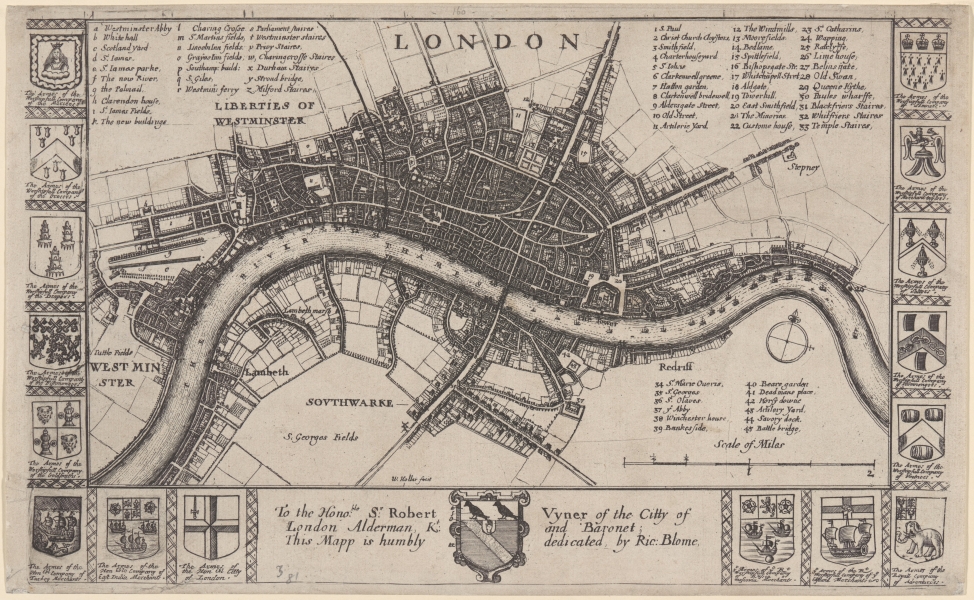
8
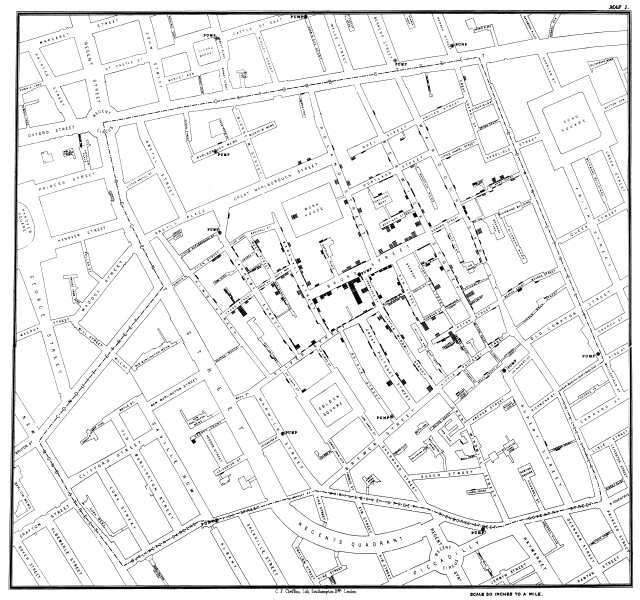
E222 - 1907 Ireland Railroad Map Leinster Munster Connaught Belfast
Map of London, before the Fire of 1666, Creator: Wenceslaus Hollar, Date Created: ca. 1667
Source: Google Arts & Culture
- Title: Map of London, before the Fire of 1666
- Creator: Wenceslaus Hollar
- Date Created: ca. 1667
- Subject Keywords: England, fires, London, maps
- Signatures / Inscriptions: Signed in plate: “W. Hollar fecit”
- Print State: Second of four states, with a scratch (not seen in Hind illustration) on plate f
- Object Type: Prints, works of art
- Object Link:
- Object Credit Line: Davison Art Center, Wesleyan University. Gift of George W. Davison (B.A. Wesleyan 1892), 1940
- Materials & Techniques: Etching on laid paper
- Image Credit Line:
- Dimensions: 1677
- Bibliography: Parthey 1000; Hind 8 ii/iv
- Associated People: Created by Wenceslaus Hollar (Bohemian, 1607-1677)
- Accession Number: 1940.D1.131
[ 2025-11-03 22:25:50 ]
“On the Mode of Communication of Cholera” - John Snow - 1854 (Annie Gustafson)
John Snow was an English physician whose pioneering research in the 1850s helped establish the field of epidemiology and transformed public health. At a time when most people believed cholera was spread by “miasma”—foul air—Snow hypothesized that contaminated water was the true culprit. During a deadly cholera outbreak in London’s Soho district in September 1854, Snow meticulously recorded the locations of cholera deaths and plotted them on a map, revealing a clustering around the Broad Street water pump.pmc.ncbi.nlm.nih+4
Snow’s map used stacked bars to indicate cholera deaths at each address, highlighting the concentration of cases among those who drank water from the Broad Street pump. He also discovered that brewery workers and residents of a nearby workhouse, who consumed water from other sources, escaped the epidemic almost entirely. Snow convinced authorities to remove the pump handle, leading to a rapid decline in new cases.wikipedia+4
This ground-breaking visualization not only supported Snow’s waterborne theory but also demonstrated the crucial role of spatial analysis and data mapping in disease control. His work laid foundations for modern epidemiology, public health interventions, and the use of maps as analytical tools in medicine.scienceline+2
- https://learn.arcgis.com/en/projects/map-a-historic-cholera-outbreak/
- https://en.wikipedia.org/wiki/File:Snow-cholera-map-1.jpg
- https://www.rcseng.ac.uk/library-and-publications/library/blog/mapping-disease-john-snow-and-cholera/
- https://pmc.ncbi.nlm.nih.gov/articles/PMC7150208/
- https://www.maps.com/snow-mistake-correcting-myths-in-the-mapping-of-cholera/
- https://ischool.uw.edu/podcasts/dtctw/john-snows-cholera-map
- https://en.wikipedia.org/wiki/1854_Broad_Street_cholera_outbreak
- https://scienceline.org/2010/05/john-snows-maps-of-the-broad-street-cholera-outbreak/
- https://johnsnowsociety.org/jss_mapcompetition/
- https://journalofethics.ama-assn.org/article/lesson-john-snow-and-broad-street-pump/2009-06
- https://flourish.studio/blog/masters-john-snow/
- https://en.wikipedia.org/wiki/John_Snow
- https://blog.oup.com/2013/05/john-snow-bicentenary-cholera/
- https://alondoninheritance.com/london-characters/john-snow-soho-cholera-outbreak-1864/
Annie Gustafson analysis:
Q - Can mapping deaths and water pumps provide evidence to support the miasma or germ theory of cholera spread?
L - Plot residences of the recently deceased on the same map as the locations of water pumps.
S - Snow tracked information from hospitals and public records to plot deaths and residences.
E - Inevitable estimation in any hand-drawn map, trust that data is accurate.
D - Hand-drawn–labels roads, water pumps, and deaths (via hash marks) because locations, water sources, and deaths are relevant to answering the question.
I - One and done.
Voronoi diagram of the map, courtesy of John Jungck:
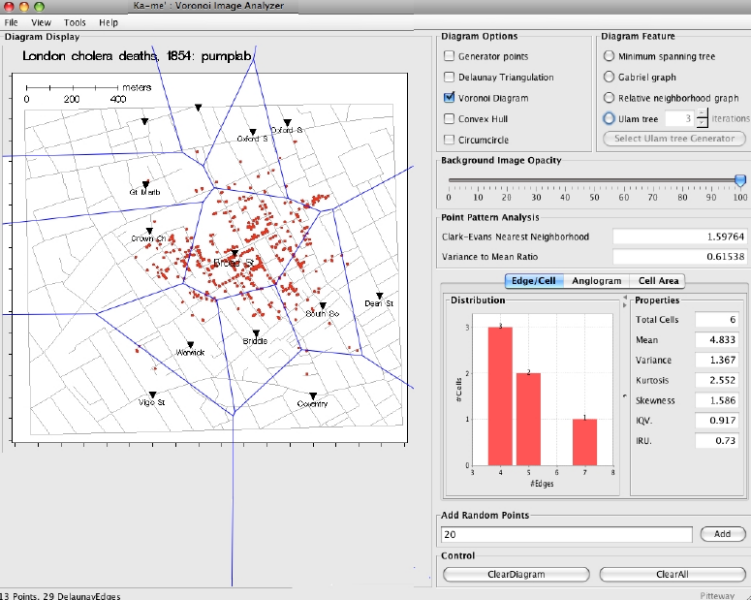 i40321
i40321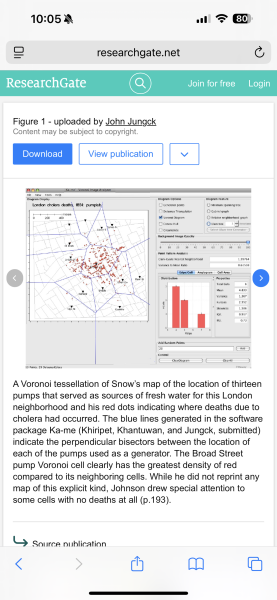 i40322
i40322
Place a DOT on the image


